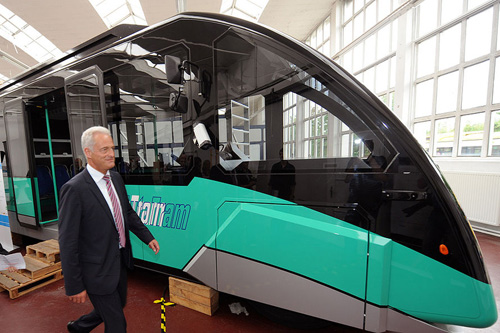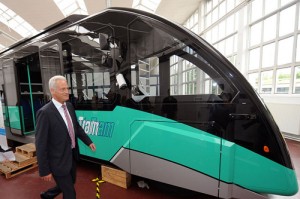The automotive industry needs to make a massive effort in order to maintain connectivity to the electric mobility phenomenon; electric cars are not only more expensive than their gasoline-burning counterparts (not taking externalities into account, such as the effect of burning fossil fuels on our health, environment, economy, and future livability of our planet), but they have a significantly shorter range and fuel is (for now) less readily available. Battery-powered vehicles can take hours to charge completely.
The EU has been offering incentives to auto makers for greener vehicles for some time, and buyers of electric and hybrid cars in many countries can expect some kind of tax credit. In Germany, the federal government is offering incentives to research institutions to develop practical electric vehicles. Their stated goal is to have a million EVs on the road in Germany by 2020 — a tiny fraction of the 42 million registered cars in the country today.

One of the results of this push towards greener transportation is the AutoTram. It has a perfectly normal steering wheel which remains totally untouched during its first test drive. Christoph Barz, scientist at the Dresdner Fraunhofer Institute for Transportation and Infrastructure Systems IVI, steers the “AutoTram” with a joystick over a barricaded section of the ATP test track in Papenburg. The vehicle is built to look like a streetcar, but it doesn’t drive on tracks. Instead, it handles more like a bus. The AutoTram is a rolling EV experiment, explains institute director Matthias Klingner.
The current focus of experimentation is the battery charge. The hours it can take to fully charge a battery just aren’t there in the busy public transportation schedule; buses and trains drive nearly non-stop from morning until late at night. Even regenerative braking doesn’t harvest enough energy to keep something as big as a bus going an entire working day.
To solve the range problem, the Dresdner researchers set up a new type of quick-charge station — one at each stop. A thirty-second stop to load and unload passengers is long enough to charge the AutoTram’s batteries enough to make it one or two stops farther down the line.
A 30-meter long AutoTram variant will make test runs in Saxony starting in December. In order to ensure that the driver has good control over the vehicle, the researchers developed a multi-axle steering system. Without it, a wheeled vehicle of this size can’t be controlled as precisely. Klingner explains that this helps the driver drive as if it were a perfectly normal bus.
The researchers at the Fraunhofer Institute are also working on projects such as more efficient electric sport coupes and compact cars with a longer range than the current standard, in addition to the larger vehicles.

 Follow
Follow